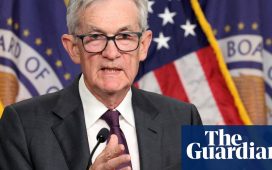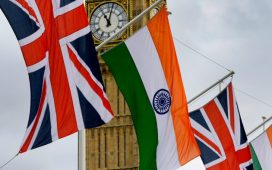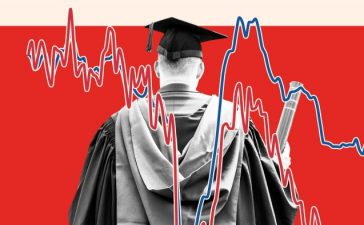Stay informed with free updates
Simply sign up to the US interest rates myFT Digest — delivered directly to your inbox.
Federal Reserve officials have sent the strongest signals yet that they are preparing to cut interest rates, raising the prospect of relief for long-suffering American borrowers for the first time since inflation exploded across the world’s largest economy in the aftermath of the coronavirus pandemic.
In public appearances this week — including a pair of congressional hearings for chair Jay Powell — US central bankers spoke with a newfound assurance about their grip on inflation and readiness to embark on a policy pivot.
Buoying their conviction was better than expected economic data, which this week affirmed a continuing downshift in consumer price pressures. That has come alongside a softening of the labour market. At the same time, US banks have warned that lower-income customers are showing signs of financial stress after a long period of high prices.
While policymakers stopped short of providing specifics about when and by what magnitude they would be lowering borrowing costs, their rhetoric made clear that a new era is under way. Traders and economists broadly expect the first reduction in September — something Tiffany Wilding, an economist at Pimco, said was a “done deal” following this week’s data.
Chicago Fed president Austan Goolsbee told the Financial Times on Friday it had been a “good week” for a central bank that has aimed to lower inflation without triggering a US recession.
“I definitely feel better [now than on Monday],” Goolsbee said. “It’s not just this week, but the data over the past two to three months point to a continuation of what happened in 2023, which was a rapid and very significant drop in inflation.”
Goolsbee added that the fall in inflation meant that real interest rates were now automatically more restrictive. “We have tightened in real terms quite a lot while we’ve been sitting and waiting. You only want to be this restrictive for as long as you have to. If you don’t have to, in my view that’s when it’s appropriate to move back to a more normalised posture.”
Since last July, the Fed has kept its benchmark policy rate at a 23-year high of 5.25-5.5 per cent.
Powell laid out the case to lawmakers earlier in the week, telling them the Fed need not focus chiefly on inflation with “considerable progress” on taming price pressures and the labour market showing clear signs of cooling.
Rather, the central bank faced “two-sided risks” and had to be more cognisant of inadvertently causing excessive job losses by continuing to wallop the world’s largest economy with elevated interest rates.
His comments were buttressed by those from Mary Daly, president of the San Francisco Fed and a voting member for the duration of 2024, who told reporters later in the week a reduction in interest rates would be “warranted”.
Underpinning the case for cuts, with inflation now more firmly under control, is the labour market, which Powell said this week was strong but not “overheated”.
With the unemployment rate inching up above 4 per cent and wage gains slowing, not only was the jobs market no longer adding to price pressures, but without careful policy calibration, the gains accrued in the aftermath of the pandemic could also be imperilled.
Avoiding that outcome was “the number one thing that just does keep me awake at night”, Powell said to members of the House financial services committee.
“I would say it’s a fairly big communications signal that you hear so many of us now and chair Powell, importantly, talking about how important the labour market is,” Daly stressed to reporters.
That emphasis was also made by Lisa Cook, a Fed governor, in a speech this week, saying the Fed was “very attentive” to changes in the unemployment rate and would be “responsive”.
The Fed is trying to achieve a “soft landing” in which inflation drops back down to the target without a sharp rise in lay-offs.
That outcome is predicated on the Fed starting to ease soon and over time reducing the policy rate closer to 3 per cent, said Priya Misra of JPMorgan Asset Management.
“The economy really is slowing and it really does look like the labour market is slowing on the back of that,” added Jonathan Pingle, who used to work at the Fed and is now chief economist at UBS.
“At some point, they are going to want the slowing to stop and steady, but the risk is [that] it keeps going.”









